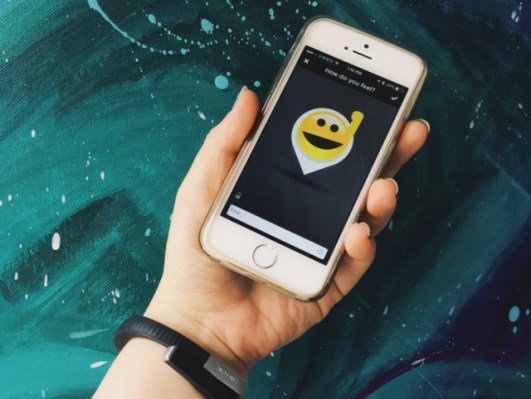Along with its many other benefits, regular workouts contribute to better moods and energy levels. As a result, I am constantly surprised to see how many fitness tracking apps and wearable devices lack a mood tracking feature.
My interest in this is personal. When I was teenager, I was diagnosed with major depressive disorder. Since then, I’ve had recurrent episodes, including a couple that were severe enough for me to be hospitalized.
Over the last two decades, I’ve tried a wide range of treatment regimens. Some included therapy, others included medication, and most included a combination of both. My doctors rarely recommended regular workouts, however, even though there have been a multitude of studies showing its effectiveness for alleviating the symptoms of mood disorders, including depression and anxiety, since 1981.
Finally, about two years before my 30th birthday, one of my doctors told me that if he could, he would make regular exercise a requirement before agreeing to work with a patient, because he believed so strongly in its effectiveness. That struck a chord and since then I’ve tried to keep up a workout routine, even when I’m struggling with a depressive episode. Some days all I can do is walk around the block, but that’s better than staying in bed all day.
To be sure, several of the most popular fitness tracking products, such as the Jawbone Up series, Nike Fuelband, and Fitbit, do have basic mood trackers. There are also several mood tracking apps available, including OptimizeMe (it can integrate with Move, which does not have its own mood tracker), Lift, and the T2 Mood Tracker, that help you find correlations between your workout frequency and mood.
I believe, however, that mood tracking should be seen as a basic option for every fitness tracking tech product, not just the best-selling ones. Furthermore, mood-tracking features should move beyond the rudimentary emoticon or number-based scale that most use.
If you are coping with depression, anxiety, or another mental illness, it can be hard to muster the motivation to exercise, even if workouts were once a part of your daily routine.
But just as regular exercise helps prevent heart disease, obesity, and a host of other ailments, it can also ease the symptoms of anxiety and depression. The Mayo Clinic suggests that people work out 30 minutes a day, three to five times a week. But even just 10 to 15 minutes of exercise at a time can make a positive impact by encouraging the release of neurotransmitters and endorphins. Making exercise into a habit also helps people gain confidence as they meet daily goals and distract from negative thoughts.
Furthermore, a followup to a 1999 study published in the Archives of Internal Medicine found that exercise’s positive effects lasted longer than antidepressants.
But research also shows that exercise needs to be a long-term habit if you want it to be an effective part of your arsenal of tools against depression or anxiety. If you suffer from a mood disorder, however, and are in the midst of an episode, it can be very hard to muster the motivation, and that is why fitness devices can be a valuable tool — as long as they have a mood-tracking feature.
Last year, while I was recovering from my most recent bout with depression, I purchased a Misfit Shine fitness tracker. I loved its smart design and the fact that I could track my daily progress with a glance. That frequently gave me the motivation to walk another kilometer, even if I was feeling lousy. I also appreciate Misfit’s updates to the Shine’s app, which included automatic sleep tracking.
The Misfit Shine lacks a mood tracker, however, and so I reluctantly gave it up and switched to the Jawbone Up24, which lets you record how you feel with a little cartoon face that runs the gamut from ecstatic to downtrodden.
Such a rudimentary mood tracker is highly subjective, of course, and when I’m depressed I’m likely to pick a frowning face even if I’m feeling physically fine. The Jawbone Up24 also only lets you record one mood per day. [Correction: A Jawbone spokesperson told me “you can actually change your mood, creating new entries throughout the day in your UP app; it will remember them, each one tracked in your Lifeline (read more here). So, you could input how you feel when you wake up and again later, say after you work out, seeing those changes/fluctuations over time.”]
If I’m depressed, my emotions can fluctuate dramatically (though, fortunately, I tend to feel better after I exercise). I would appreciate the ability to track my physical energy levels and mood separately, in addition to making new entries throughout the day.
But though it is very basic, the Jawbone Up24’s feature has allowed me to more clearly see the benefits of exercising and eating healthily, and that in turn motivates me to keep up my healthy habits. It also creates an important daily record that I can reference during psychiatric appointments.
I’m not arguing that adding mood-tracking features to fitness apps is a magic solution for depression or anxiety. Nothing is. But mood tracking isn’t just valuable for people who are coping, as I am, with mental illness. In the long-term, a well-designed mood tracker can give users important data and inspire them to live a healthier lifestyle. From a business point of view, this will also motivate users to keep buying updated versions of their wearable or engaged with an app.
If one of the benefits of exercise is to improve our sense of well-being, then all fitness tech companies should not only incorporate mood trackers into their products, but create innovative ones that will guide their users toward better self-understanding.
